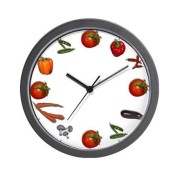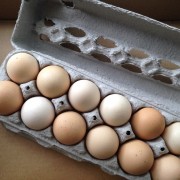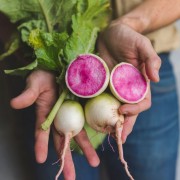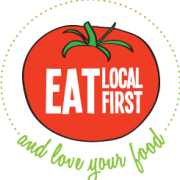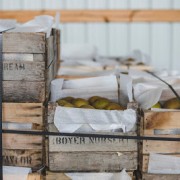“I Am Too Busy to Cook”
There are 24 hours in a day. For a typical person, 8 of those hours should be spent sleeping. At least another 8 usually go to some form of work, be it in an office, at the house, chasing kids, or some other commitment. That’s two-thirds of your day that are accounted for. Plus, there are appointments, traffic, errands and day-to-day obligations that keep us busy. Oh and Americans? We fill our days more full than most other industrialized countries. Don’t even get us started on how busy days are for parents. Kids bring along their own set of time commitments; playdates, soccer matches, swim practice, homework, meals, etc. So, that means when dinner rolls around, many of us are already exhausted. That’s why we regularly hear from folks that they’re forgoing fresh food from us because they “are too busy to cook.” Prepared meals or fast food is often easier. Yes, we won’t argue. We also know that you care about feeding your family healthful, fresh and tasty food, but sometimes doing so seems like such a hurtle. Take a deep breath and keep reading, we’re here to help.
First, try a basic basket. Pick items that you’re relatively familiar with to get your feet wet. Slice cucumbers for dipping, tomatoes for sandwiches, and our fruit just needs a rinse!
Second, try these time saving tips to have the best of both worlds. This is especially true because our food is local and in-season. It automatically has more flavor which means it takes less effort on your end.
–Plan. When our menu comes out on Friday, sit down and make a list for the week. It doesn’t take long. Jot down the meals that most of the family will be at home for. Start, by plugging in the vegetables that will arriving on delivery day. Then, finish off the meals with the protein of your choice (you can skip the store entirely by doing so from our list of extras.) This may seem silly, but planning on the weekend when you have more time will save you loads of time during the week. Driving home from work or a long day is not the time to think about dinner for the first time. If you already have it written down, you can go through the pre-planned motions once you get home rather than having to start from scratch.
–Prep – Have two recipes that call for diced onions? Dice all of your onion at once and store the extra for the second recipe. Why pull out the cutting board twice?
-Look up easy recipes. We love Pinterest, and our Pinterest page has recipes organized by basket item. Everyone is busy, and thankfully there are some wonderful folks who have shared their easy (and often kid-friendly) ways to cook fruits and vegetables. Don’t forget that you can substitute ingredients if the recipe calls for something you don’t have on hand.
-Love thy crockpot. If you can wake up just a few minutes earlier, you can have dinner finished before you even leave the house. Soups, dips and stews – oh my! Plus, you can cook in bulk and freeze any left overs for the really busy days.
–Recruit Your Kids (or spouse, or roommate) – Cooking in the kitchen can be a great way to bond. Young kids can wash the produce, and older ones can peel and chop. Oh and spouse/roommates? Delegate! Two chefs are better than one, and that way cooking doesn’t feel like ignoring quality time, it just becomes part of it.
One final note: using our service actually saves you time in the long run. We narrow down your options by offering only what’s in season, which means you don’t have to do the typical brainstorming which often consists of “So, how about green beans again?” Plus, you’ll be in and out of the store quicker, only buying what you need to supplement your basket items. Want more ideas on how to save time in the kitchen? Check out this article from life hacker.
